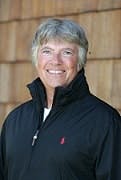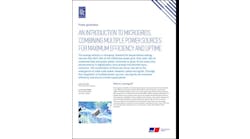Martin Kushler, ACEEE
This post originally appeared on the ACEEE Blog.
On September 22-24, ACEEE brought our 7th National Conference on Energy Efficiency as a Resource to the South for the first time, in Nashville, Tennessee. The timing proved fortuitous in view of the activities in Southern states such as Arkansas, Louisiana, and Mississippi. We established an all-time record attendance of nearly 450 people, with many first-time attendees at our conference coming from the region. ACEEE was pleased to be able to showcase examples of strong progress in the South, as well as examples across the nation of utilities making the most of energy efficiency as a system resource.
The conference featured three plenary panel sessions and a total of nearly 90 breakout presentations. Topics ranged from the latest developments in energy efficiency programs in the residential, commercial, and industrial sectors, to regulatory policies that encourage utility energy efficiency efforts. Other topics included technical assessments of energy efficiency potential, costs, and benefits, and an examination of related issues such as energy efficiency impacts on environmental compliance and jobs. The conference also featured sessions on natural gas energy efficiency and energy efficiency in the “public power” sector. We encourage you to browse the conference presentations to get access to a treasure trove of information on the latest developments and achievements in the area of energy efficiency as a resource. Today we have also released a new white paper highlighting some of lessons learned from the conference.Conference highlights included keynote speeches from Colette Honorable, Chair of the Arkansas Public Service Commission (and in line to become the next president of NARUC this fall), and Bill Johnson , President and CEO of the Tennessee Valley Authority (our host sponsor for this year’s conference). These key industry leaders helped set the tone of the conference, emphasizing the critical role that energy efficiency is playing in addressing energy needs.
From the broader national perspective, a highlight was the plenary panel entitled Pushing the Envelope: How Far Can We Go with Energy Efficiency as a Resource, and What Will It Take to Get There? That panel featured four “giants” in the utility energy efficiency field: Gene Rodrigues, Tom Eckman, Scott Johnstone, and Jeff Schlegel, who summarized the latest amazing accomplishments in what are arguably the most dominant states in utility customer-funded energy efficiency (California, Washington, Oregon, Vermont, and Massachusetts). For example, Massachusetts and Vermont are the two leading states in the nation in terms of annual percentage of electricity savings achievements (each over 2%), while California dwarfs all other states in the total magnitude of utility energy efficiency spending and savings. Oregon and Washington have the most robust integrated resource planning and implementation in the nation. Check out the slides for great examples of where energy efficiency is really pushing the envelope.
The overwhelming evidence from this conference documents that energy efficiency is thriving as the lowest-cost (and cleanest) utility system resource across the United States, whether in states with long-standing programs or those that more recently have initiated significant customer programs. And unlike kudzu, it’s good to see energy efficiency growing quickly.
Martin Kushler is a Senior Fellow at the American Council for an Energy-Efficient Economy (ACEEE).







